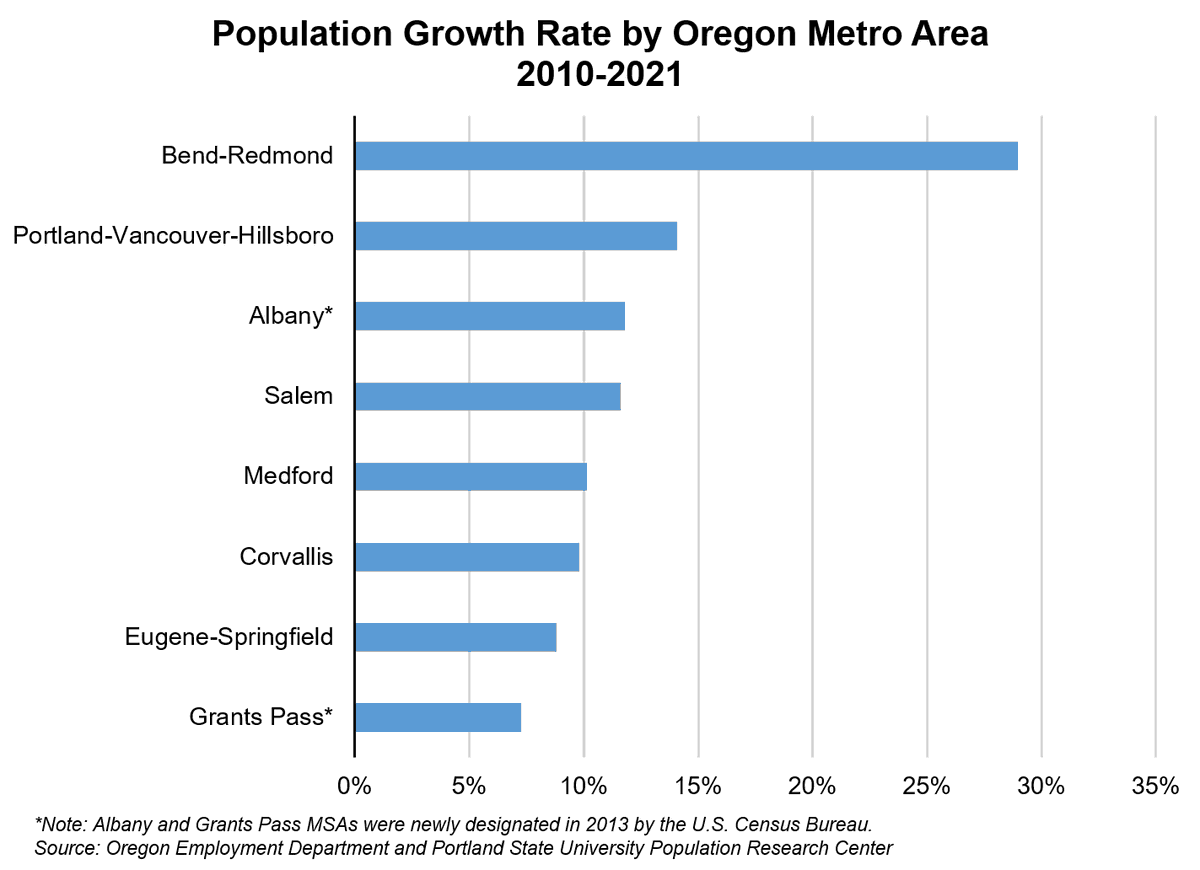‘Stunning’: Deschutes County’s population grows by nearly 29% since 2010, double that of Portland area

Deaths outnumbered births last year, so all of Oregon's growth was due to net migration
SALEM, Ore. (KTVZ) -- Central Oregon's counties have been three of the four fastest-growing in the state since 2010, with Deschutes County's nearly 29% growth rate more than twice that of the Portland area, a state economist said Monday.
Here's the report from Oregon Employment Department economist Jessica Nelson:
In 2021, Oregon’s population increased by 22,769 to 4,266,620. This marked growth of 0.5% over the year and growth of 11.4% since the 2010 Census, close to the rate of growth over the prior decade from 2000 to 2010 as well. Portland State University’s Population Research Center recently released more detailed information on why this population growth has occurred.
There are two main reasons that lead to population change. First, an area increases in population if more births than deaths occur in a given year or vice versa. Second, population can increase or decrease through net migration. That is, over the year, people either move into or out of an area. A positive value of net migration means more people moving into an area than leaving it, while a negative value of net migration indicates more people leaving an area than moving in.
In 2021, deaths outnumbered births, resulting in a natural population decrease of 2,210. The number of deaths reached 41,833, while births resulted in an additional 39,623 Oregonians in 2021.
With 24,979 net migrants in 2021, all of Oregon’s population increase over the year was due to net migration. Since the 2010 Census, Oregon had an average net migration of 31,000 people per year. Migration in 2021 was no doubt hampered by COVID-19 pandemic restrictions and concerns, as well as limited housing supply and high housing costs.
Population Growth by Area
From 2010 to 2021, Oregon’s population grew 11.4%. All but one county in Oregon gained population between 2010 and 2021. Grant County lost an estimated 219 people, a small population loss of 2.9%. The slowest growing counties included Wheeler (1.0%), Harney (1.5%), Union (2.1%), and Malheur (2.2%). All of the 15 counties that grew less than 7% between 2010 and 2021 were rural counties.
Central Oregon counties made up three of the four fastest-growing counties since 2010. Deschutes had a stunning growth rate of 28.9%, far outpacing the next fastest growth, seen in Crook County (21.5%). Other counties with larger-than-average growth rates included Polk (17.9%), Jefferson (14.6%), Washington (14.2%), and Clackamas and Morrow (both 13.1%).
Oregon’s 13 metro area counties accounted for 90% of population gains since 2010. Their share of Oregon’s population was 83% in 2010, and the metro area share rose to 84% in 2021. In 2021, 3.6 million Oregonians lived in metro areas, and about 700,000 Oregonians lived in nonmetro areas.
By metro area, population growth was fastest in Bend-Redmond (also known as Deschutes County), with a growth rate of 28.9%. The state’s largest metro, Portland-Vancouver-Hillsboro, gained 14.1% to reach 2.5 million residents in 2021. Its gain of 314,000 residents between 2010 and 2021 accounted for 72% of Oregon’s population growth since 2010.
Population Estimates by Age and Sex
The Population Research Center at Portland State University prepares annual population estimates for Oregon and its counties by age and sex, and incorporated cities and towns as of July 1 each year. These estimates serve as the official population numbers between each decennial Census and are used to disburse state revenues to Oregon counties and cities.
To explore and use population estimates data for 2021 and prior years for Oregon and its counties, visit https://www.pdx.edu/population-research/population-estimate-reports.